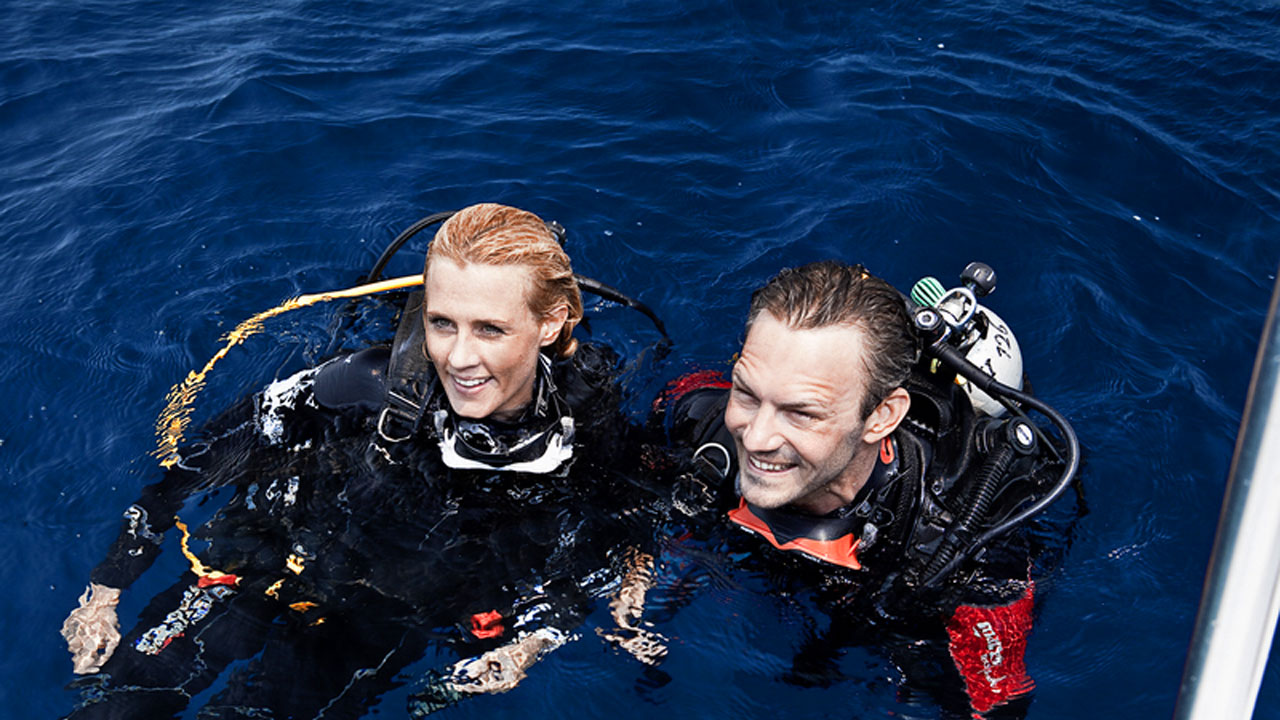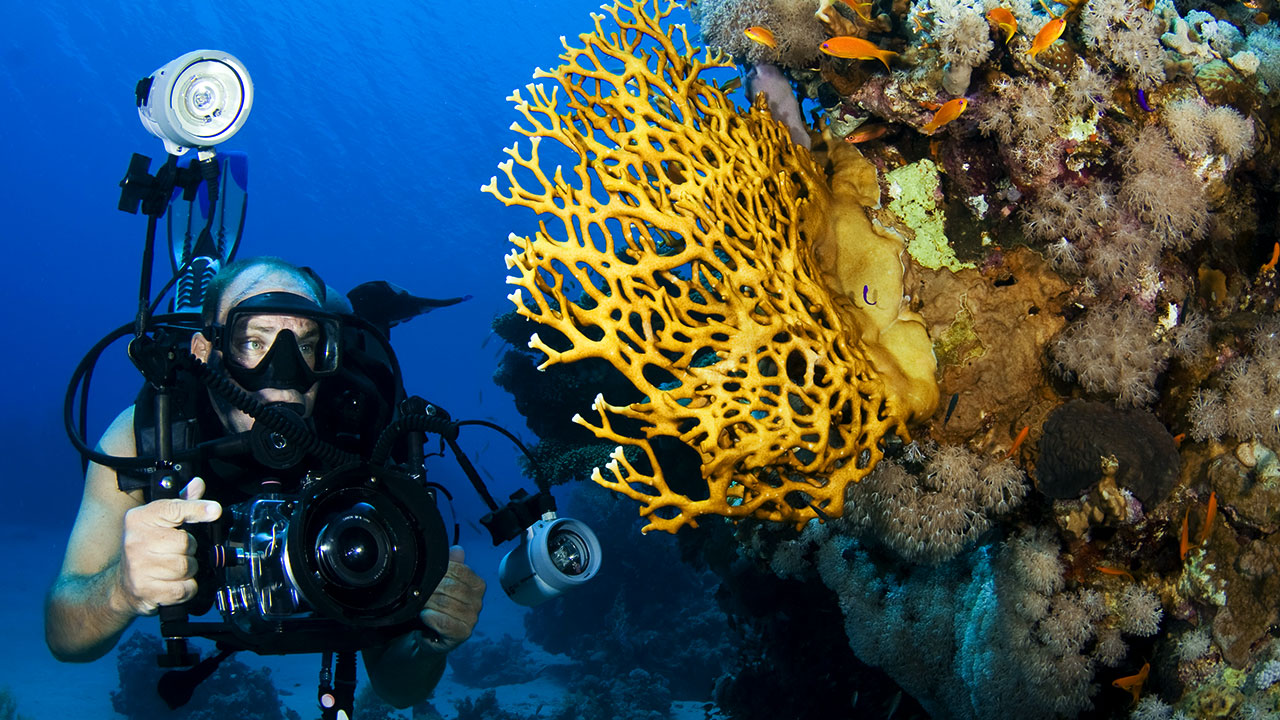Scuba Skills: Tips for Ascending Properly

W Whether you are diving shallow or deep, from a boat or shore, and following any type of the profile, most of your dives will end with a vertical ascent to the surface. Therefore, safe ascent control is one of the most crucial scuba skills every diver should master. Unless performed correctly, ascent is often the part of the dive that carries the greatest risk of injury.
As the diver breathes compressed air at an ambient water pressure, Nitrogen slowly saturates the diver’s tissues. As long as the diver remains at depth, the gas presents no problem. However, when the diver decides to ascend and the ambient pressure starts to decrease, Nitrogen comes out of the tissues back into the bloodstream. If a diver ascends too quickly, the gas expands at such a rate that the body is unable to eliminate it efficiently. This may lead to some very unpleasant and in many cases dangerous consequences, such as decompression sickness, arterial gas embolism, and different overexpansion injuries.
Proper ascent techniques can help to minimize the risk of all the above-mentioned problems. So let us go over the most important steps you need to perform in order to ascend safely.
1. Begin your ascent early. Remember, proper ascent takes time. Therefore, it is important to always keep track of your remaining breathing gas and physical factors, such as fatigue, to start ascending when you are not too tired and have enough gas to complete you dive safely. Also, make sure that you have not exceeded the no-decompression limits. If you have, prepare to make decompression stops at recommended depths.
2. Agree with your buddy. Don’t initiate an ascent, unless both you and your buddy are ready. Show a clear thumb up hand signal and wait for a confirmation to make sure your buddy is aware the dive is ending. Stay face to face and within touching distance from each other as you come up.
3. Lookup. reach up and come up. This is a very important step that involves a few things, in particular examining your ascent path and deflating your BC.
First, look up and around, searching for possible obstacles, so that you don’t bump your head on something as you ascend.
The second part is raising the inflate/deflate hose above your head in preparation for venting the expanding air from your buoyancy compensator. Depending on the type of you BC, this may be done differently, however, the important part is to vent the expanding air to prevent rapid, uncontrolled ascent. The rule of thumb is to ascend without using your BC, but performing relaxed fin kicks.
4. Monitor your ascent rate carefully. As you begin the ascent, place your depth gauge or dive computer in such a position that will allow you to constantly keep an eye on your ascent rate. It is recommended to not exceed the rate of 60 feet (18 m) per minute when ascending from more than 60 feet of depth, and 30 feet (9 m) per minute for dives shallower than 60 feet. Ascending even slower will give you an added margin of safety.
5. Make safety stops. It is a general rule to make a safety stop (a three to five-minute pause during your ascent) if you are diving deeper than 33 feet (10 m). You can use this time to off-gas, check your equipment and plan the final phase of the ascent. In order to make a safety stop easier, you can grasp a stable object, such as a downline, hang bar, anchor or mooring line. Remember, you should leave the safety stop together with your buddy, both carefully monitoring your ascent rate and the surface above.
6. Be extra careful during the final 20 feet (6 m) of ascent. The nearer you are to the surface, the more rapidly the ambient pressure changes, posing you at an even greater risk of injury from expanding gas bubbles. Maintain your concentration and ascend as slowly as possible, preferably, 1 foot every 2 seconds or slower. If you are surfacing to a boat, avoid ascending beneath the hull, ladders or a swim platform.
Once you have reached the surface, inflate your BC and signal the boat crew (or onshore personnel) with an OK signal (forming a large circle with both hands above your head). Remember, you dive isn’t over, until you have safely exited the water, thus, you should keep your mask on and your regulator or snorkel in your mouth until you are on the boat/shore.
Stay safe and happy diving!





Hi Jerry! Consider practicing your finning technique to make each kick more efficient. Using more efficient kicks rather than stronger kicks will help you conserve gas, you will also be less likely to cramp, and will not tire as easily. If you are using the flutter kick, keep your legs straight (avoid the bicycle kicking where you are bending your knees a lot), start the motion from the hips, and try to keep your toes pointed. You should also consider learning the scissor kick, as it provides a good amount of power with minimal effort. As a bonus, while practicing the finning techniques, you will also be improving your leg strength) In terms of equipment, make sure your fins are not too stiff (as stiffer blades require more leg strength for good propulsion). Some of the good fin options would be Atomic Aquatics Split Fins or ScubaPro Seawing Nova – they are easier on your legs but also offer great propulsion.
On my emergency ascent skill my instructor said I did not have the leg strenth to start my ascent. How can I compensate for this?